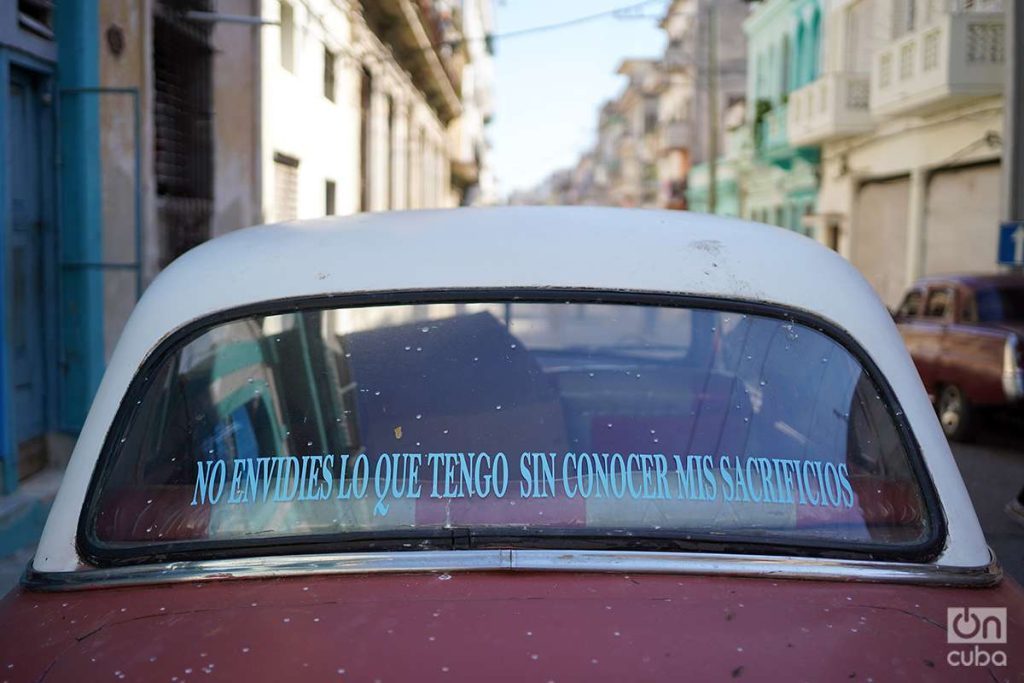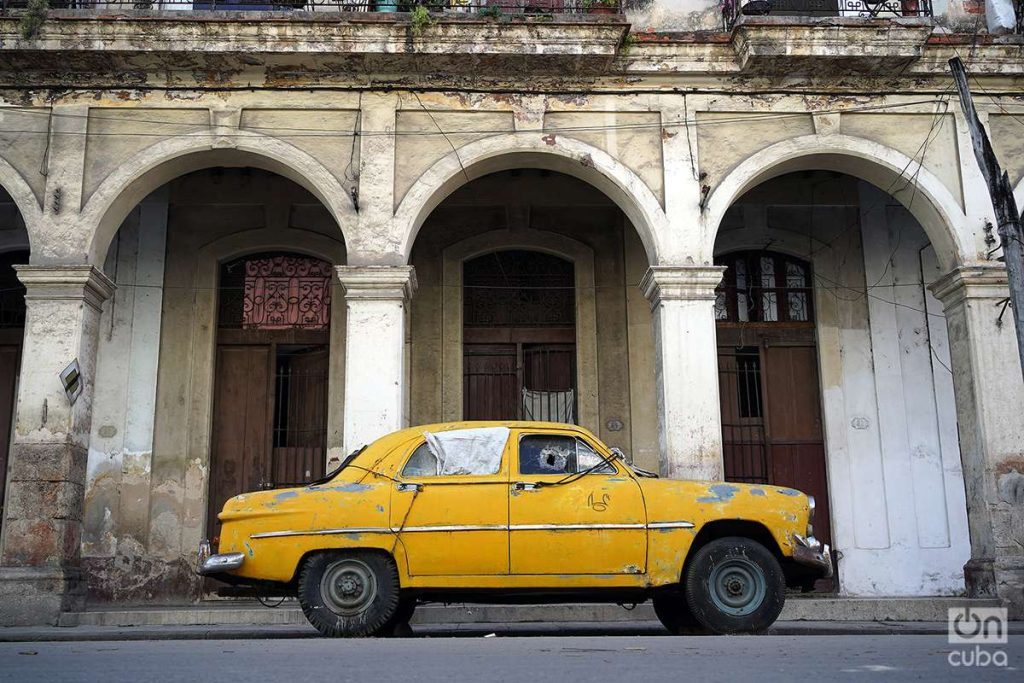PARA LOS CUBANOS DUEÑOS DE “ALMENDRONES”… ! HASTA QUE LA MUERTE LOS SEPARE !. PHOTOS
Para los turistas son los autos antiguos de Cuba. Para los cubanos simplemente los “almendrones”. El peculiar nombre proviene -según los cubanos- de su parecido con una almendra gigante. Los choferes que los manejan les llaman “boteros”.
La mayoría inundan las calles de la isla caribeña de humo, olor a combustible y un ensordecedor ruido, pero aun así, son joyas del diario vivir cubano. Quienes visitan la isla quedan impresionados con estos autos de los años 50 y 60, capaces de burlar el paso del tiempo.
Chevrolet, Dodge y Pontiac son algunas de las marcas que circulan en Cuba. Entre 1990 y 2000, los Peugeot y los autos chinos ocuparon las carreteras cubanas, pero los viejos automóviles estadounidenses se mantuvieron. Los “almendrones” no tienen muchas piezas originales, pero los mecánicos ingeniosos buscan las vías para remendarlos y reciclar piezas y motores de vehículos rusos o más recientes.
HISTORIA DE LOS ALMENDRONES…
Cuando un cubano consigue tomar posesion de un carro, será para toda la vida. Hasta que la muerte los separe y más allá, pues será heredado de generación en generación.
“No envidies lo que tengo sin conocer mis sacrificios”. Lo leí hace poco en la parte trasera de un almendrón destartalado, varado en pleno barrio habanero de Cayo Hueso y al que poco hay que envidiarle. Posiblemente no vuelva a rodar por la ciudad museo que es La Habana.
Es un hecho establecido que los almendrones son parte del paisaje de la isla desde hace mucho, desde que llegaron sin saber que sería “para siempre” y compartir espacio con los Ladas y Moskvich rusos, otros que se resisten a desaparecer de nuestras calles y que sobreviven gracias a la pericia de nuestros mecánicos y al contrabando de piezas desde algunas selectas tiendas “mayameras”.
Entre el sistema de distribución que primó hasta finales de los 90 por un lado, en el que solo podían adquirir un carro los trabajadores de avanzada o los tracatanes de turno, y por otro, los elevadísimos precios de hoy, ni remotamente pagables para la inmensa mayoría, cuando un cubano da con un carro, tiene que durarle toda la vida. Hasta que la muerte los separe y más allá, pues será heredado de generación en generación per saecula saeculorum.
El cubano inventa, nadie lo duda. Somos los reyes del remiendo, el reciclaje y la vida eterna de nuestros añejos autos; tanto, que han pasado a ser imagen icónica de La Habana que se vende en las postales y revistas para turistas.
Soy admirador de nuestros mecánicos, capaces de modificar —y hasta mejorar— los diseños de las marcas más famosas del mercado. Me gusta retratarlos debajo de los autos, haciendo magia. La imagen del hombre devorado, aplastado por la máquina que no puede vivir sin él.
Pero me aburre la foto del almendrón turístico y La Habana de fondo. Por eso estas fotos van por otro lado, por el de los olvidados. Los autos que, por alguna u otra razón, llevan años a la intemperie, cada día más oxidados y carcomidos, con las gomas podridas y los asientos destrozados. Esos que tienen cada vez más lejana la resurrección que los lleve de vuelta a las calles y permanecen bajo el sol y la lluvia como silenciosos monumentos a la supervivencia o la decadencia.
En mis caminatas buscándolos para retratarlos encontré de todo. Algún Lada, pocos autos modernos y muchos almendrones. Algunos tirados a la buena de Dios, otros asegurados como la caja fuerte de un banco.
Aunque el premio se lo lleva uno azul, el más destrozado de los que vi, de marca indescifrable, aplastado como si fuera la única víctima de una batalla de transformers. Fue escachado por un edificio que se desplomó cuando pasó el huracán Ian. Lo más sorprendente no era el estado del cacharro, sino que su dueño lo había puesto a la venta, según me contaron algunos vecinos que se ofrecieron incluso a llamarlo si yo me animaba a comprarlo.
Pero no. Ni mi bolsillo ni mi fe en los mecánicos del barrio dan para semejante locura. Aunque es probable que alguien lo compre y en un par de años, magia cubana mediante, el amasijo azul ruede por el malecón lleno de turistas, ajenos a su increíble historia de los Almendrones Cubanos.
FOR THE CUBANS OWNER OF “ALMENDRONES”… !UNTIL DEATH SEPARATES THEM!. PHOTOS.
For tourists are the old cars of Cuba. For Cubans simply the “almendrones”. The peculiar name comes -according to the Cubans- from its resemblance to a giant almond. The drivers who drive them call them “boteros”.
Most fill the streets of the Caribbean island with smoke, the smell of fuel, and a deafening noise, but even so, they are jewels of Cuban daily life. Those who visit the island are impressed with these cars from the 50s and 60s, capable of deceiving the passage of time.
Chevrolet, Dodge, and Pontiac are some of the brands that circulate in Cuba. Between 1990 and 2000, Peugeots and Chinese cars occupied Cuban roads, but the old American cars remained. The “almendrones” do not have many original parts, but resourceful mechanics find ways to patch them up and recycle parts and engines from Russian or newer vehicles.
HISTORY OF THE ALMENDRONES…
When a Cuban manages to take possession of a car, it will be for life. Until death do you part and beyond, as it will be inherited from generation to generation?
“Do not envy what I have without knowing my sacrifices.” I read it recently in the back of a dilapidated almendrón, stranded in the middle of the Havana neighborhood of Key West and to which there is little to envy. Possibly I will never roll through the museum city that is Havana again.
It is an established fact that the almendrones have been part of the island’s landscape for a long time since they arrived without knowing that it would be “forever” and share space with the Russian Ladas and Moskvich, others who refuse to disappear from our streets and who they survive thanks to the expertise of our mechanics and the smuggling of parts from some select “mayameras” stores.
Between the distribution system that prevailed until the end of the 1990s, on the one hand, in which only advanced workers or sleuths on duty could buy a car, and on the other, today’s extremely high prices, not even remotely payable for the immense For the most part, when a Cuban finds a car, it has to last a lifetime. Until death do you part and beyond, as it will be inherited from generation to generation per saecula saeculorum.
The Cuban invents, no one doubts it. We are the kings of patching, recycling, and the eternal life of our old cars; So much so that they have become an iconic image of Havana that is sold on postcards and tourist magazines.
I am an admirer of our mechanics, capable of modifying —and even improving— the designs of the most famous brands on the market. I like to portray them under the cars, doing magic. The image of the devoured man, crushed by the machine that cannot live without him.
But the photo of the tourist almendrón and Havana in the background bores me. That’s why these photos go the other way, for the forgotten. The cars that, for one reason or another, have been out in the open for years, each day more rusty and rotten, with rotten tires and destroyed seats. Those who have the resurrection that takes them back to the streets more and more distant and remains under the sun and the rain as silent monuments to survival or decadence.
In my walks looking for them to portray them, I found everything. Some Lada, few modern cars, and many almendrones. Some are thrown to the good of God, others insured like a bank safe.
Although the prize goes to a blue one, the most destroyed of the ones I’ve seen, with an indecipherable mark, crushed as if it were the only victim of a transformer battle. He was hit by a building that collapsed when Hurricane Ian passed. The most surprising thing was not the state of the pot, but that its owner had put it up for sale, according to what some neighbors told me who even offered to call him if I dared to buy it.
But not. Neither my pocket nor my faith in the neighborhood mechanics are enough for such madness. Although it is likely that someone will buy it and in a couple of years, through Cuban magic, the blue mixture will roll down the boardwalk full of tourists, oblivious to its incredible history of the Cuban Almendrones.
Agencies/ Wiki/ HuffPost/ OnCuba/ AntiguosCarrosCuba/ Alejandro Ernesto/ Extractos/ Excerpts/ Internet Photos/ Arnoldo Varona/ www.TheCubanHistory.com
THE CUBAN HISTORY, HOLLYWOOD.











